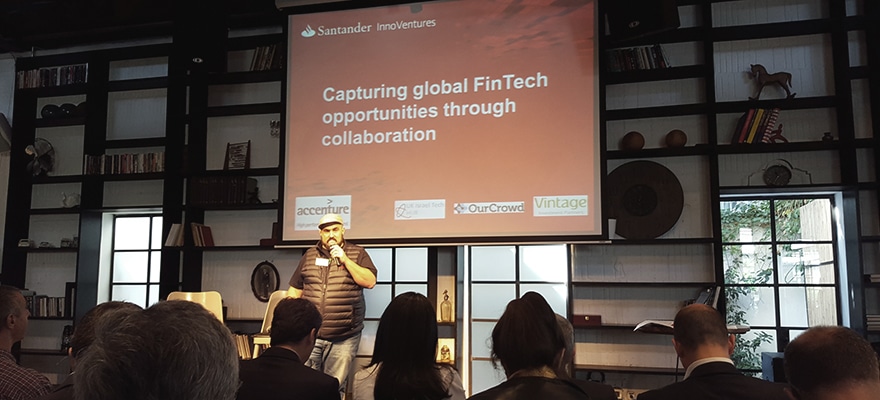Plenty of digital ink goes towards fintech startups that are posing a threat to traditional financial firms. Operating in the marketplace lending, mobile banking or automated financial advisory, these startups are encroaching on the business of banks and asset managers.
Not to be taken lightly, a large swath of banks and financial firms have been responding to the challenge with their own digital products, opening innovation labs and investing and partnering with startups. Among traditional global banks, arguably taking the lead of evolving their operations for the digital age is Santander. With over $1.3 trillion in assets, 117 million customers and a €100 billion market cap, Santander is one of the biggest banks in the world.
Wide Reaching Fintech Approach
What is unique about Santander, is the bank's wide ranging approach to embracing innovation and the fintech eco-system. Among its endeavors include Openbank in Spain, the launch of Santander InnoVentures, a $100 million fintech fund, competitions around blockchain technology, the Syntheo incubator and sponsoring of fintech demo days.
While operating as different projects, the array of ventures work together to boost Santander’s foothold into the future. For example, InnoVentures represents the bank’s investment arm in the fintech sector. But, the fund is also a funnel of potential value adding technology that can be integrated by Santander for its customers.
In addition, Openbank is also an important part of this strategy addition. Operating as a digital bank for the Spanish market, the venture was launched to operate as its own brand, backed by the Santander name. As a digital firm, Openbank is less tied down to the overall bank’s legacy systems and procedures allowing them to have more flexibility to work with startups and test new technology.
InnoVentures
Representing one of the largest fintech focused funds, InnoVentures was launched in 2014 with a mandate to invest $100 million in up to three years. Describing the fund at a recent Santander fintech innovation event, Mariano Belinky, Managing Partner at Santander InnoVentures, explained that they have a “Global mandate on invests in fintech companies where we believe we can provide value to our customers.” He added that on the other side, they believe that they are able to provide value to the startups they invest in by putting their products in the hands of their retail and commercial customers.
Since launching the fund, InnoVentures has invested in iZettle, MyCheck, Ripple, Cyanogen and Kabbage. Covering Payments , alternative lending and digital delivery of financial service, the firms represent the three of the five investing verticals targeted by the fund. As part of its funding, Santander has invested alongside other traditional venture capital funds such as Index Ventures, Andreesen Horowitz and Google Ventures as they prefer not to lead deals.
Investments and Partners
Even if we don't invest we may still partner with startups
Arriving in Israel to connect with startups after previously spending the week in Dublin’s Web Summit where they also made their presence to participating fintech firms, InnoVentures operates as both an investment fund and ambassador to the bank. Belinky explained that this open approach is important as it allows them to create relationships with many startups as he stated, “Even if we don't invest we may still partner with startups.”
In addition, Belinky explained that the global activity of InnoVentures provides an opportunity for Santander to have a presence in markets where the traditional bank hasn’t entered. In this regard, the visit to Israel is a prime example of a market that is interesting for InnoVentures and Santander’s overall innovation goals due to the local talent and types of startups, but where the bank doesn’t provide activities.
Still a Big Bank
Overall, Santander represents a case of where the bank is proactively using its size and clout to carve out its niche in the fintech sector while also forging its plans for the bank of the future. However, like other banks, not all of Santander is evolving its services quickly.
One of the knocks on large banks is that even when they come across technology that they deem important for their future, it may still take over a year, if ever, to properly integrate the new solution. For startups this is a frustrating endeavor. But the reality is that the long process isn’t specific to startups working with banks and takes place across many vendor types where their solutions need to be evaluated for regulatory, technology and usability requirements.
Nonetheless, Santander does have its openbank unit as a fall back platform for more efficient partnering with third parties. In addition, internally, Santander has set in place an increasing focus on using new technology such as analyzing big data for understanding client behavior and experimenting with Blockchain technology as a solution to improving efficiency of currency transfers and custodianship of customer securities. As such, these endeavors that are taking place internally allow the bank to have a better understanding when working with partners and should expedite future integrations.

















